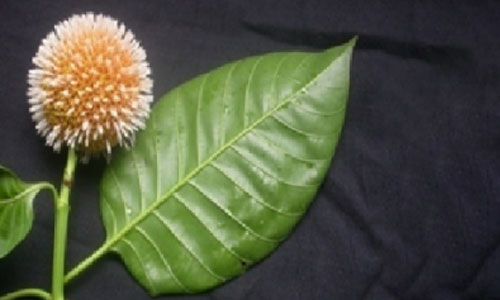|
Division
|
Angiosperms |
|
Class
|
Dicotledons |
|
Subclass |
Gamopetalae |
|
Series |
Epigynae |
|
Order |
Rubiales |
|
Family
|
Rubiaceae |
|
Genus
|
Anthocephalus |
|
Species
|
chinensis |

|
Etymology: |
Greek anthos, flower and Kephale, head referring to the arrangement of flowers in head. |
|
Botanical name
|
Anthocephalus chinensis (Lam.) Rich. ex Walp. ( A. cadamba (Roxb.) Miq., Neolamarkia cadamba (Roxb.) Boisser.) |
|
Local/Trade names:
|
Kadam |
|
Conservation status:
|
Commonly planted in gardens. Also found in North-east India. |
|
Digonestic features:
|
Flower head upto 5 cm across. |
|
Description: |
A large, deciduous tree. Bark grey, becoming darker and fissured with age. Leaves broadly ovate, 7.5-18 x 4.5-11 cm, rounded or sometimes subcordate. Flowers yellow, in solitary, terminal heads 3.5-5 cm across. Fruit a fleshy, globose, orange receptacle. Seeds not winged, muriculate. |
|
Phenology: |
Fls.: May-June. |
|
Distribution: |
Sub-Himalayan tracts from Nepal eastwards and in the south in the N. Circars and W. Ghats. |
|
Where to see it: |
Medicinal Plant Garden, Arboretum near Japanese Garden, Gate No. 2 side, Nursery and Near main Gate. |
|
Uses: |
Wood used chiefly for boarding and for packing-cases and tea-boxes, also employed for beams and rafters, and light construction work. Suitable for dugouts, canoes, carving, and turnery. Pulp suitable for manufacture of cheap quality paper. Flowers receptacle edible. Bark tonic and febrifuge. Flowers yield an essential oil. |
Chief Conservator of Forests & Chief Wildlife Warden is the Head of the Department. There is one post of Conservator of Forests & two posts of Deputy Conservator of Forests viz.